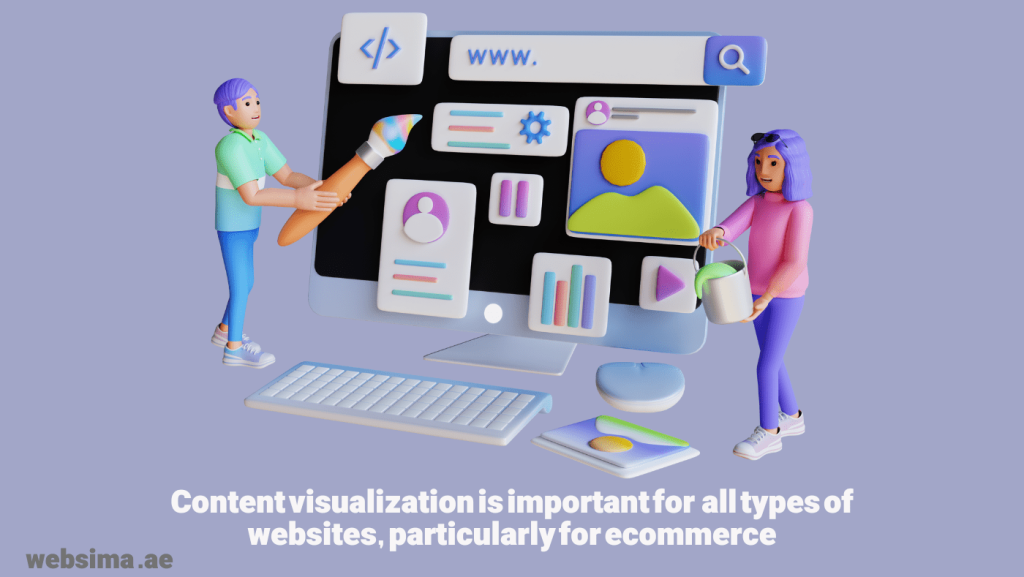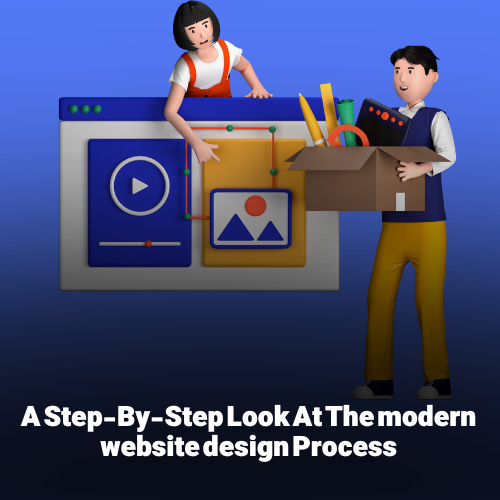A Step-By-Step Look At The modern website design Process
The importance of having a well-designed website is crystal clear these days. The online market grows rapidly, so does the number of online businesses across the internet. If you are one of those who are thinking of website design in Dubai, to start your online business, you might have come across the fact that all products of any type are now being sold on an endless number of websites. As such, regardless of the niche you are thinking of, you must create competitive advantages for the sake of making your website profitable.

This article will walk you through the steps that are required to take, in order to design a standard website based on the modern parameters.
The modern web design process in 7 steps
The website design price in Dubai, if it comes from a reputable firm, is relatively high. Therefore, it is crucial for you to have a deep understanding of the proper process to build a modern website. Here are the steps to take from day one up until the launch date of your website.
1- Identify your goal
As the initial step, you must be thinking about the final goal of the website. There are some strategic questions for you to respond to by yourself or in collaboration with the client for the sake of identifying the website goal. Here are the questions:
- Who is this website for?
- What is the main objective you expect the website to accomplish?
- Who are the targeted audiences?
- Is it an informative website or an ecommerce website?
- How is the competitor’s website and what competitive advantages are needed?
By answering these questions, the goal of the website will be identified, so the horizon will start to be brighter.
2- Define the scope of the project
Regardless of the website type you are building, the scope of the web design project is a crucial part of the web design process. Even though the project might be clear at the beginning, as the design process proceeds, many changes will be asked by the client or might be required. As such, a very precise and detailed project scope, including the website type, number of pages, required features, etc. must be created as a baseline for the project to start. A clear project scope doesn’t have anything to do with the project size, It is required to be in place for all projects of any size, from a simple local restaurant website, all the way through mega ecommerce websites.
3- Create your sitemap and wireframe
Sitemap is the foundation of your website. A well-designed sitemap makes the designer capable of understanding the hierarchical structure of the website, the flow and the relationship between web pages and the content. A sitemap for a web design project plays the same role that the blueprint plays for a construction project. A wireframe is also needed, as it visualizes the website’s final appearance and look. A wireframe not only helps designers to have a clear understanding of the ultimate appearance that must be designed, but also helps the client to comment and change the design beforehand, if needed.
4- Create content
Once the wireframe is ready, it is time to go through the most important part of the website design which is the content creation. A quality content not only helps to engage users more and keep them to stay longer on your website and motivate them to take action, but also boosts your website SEO performance and improves your website ranking on SERPs. Never underestimate the importance and power of quality content and get it done by employing a professional content creator with a proven track record of success.
5- Visualize the content

Internet users are not tolerant enough these days to read through long textual content. They prefer visualized content accompanied with a brief written explanation, so it takes not a long time to understand. At this stage, you must be creating a visual character of your website and the content and apply it across all web pages. Make sure to use high quality, attractive and responsive images and visual elements to improve engagement. Visualization is important for almost all types of websites, however it is even more important for ecommerce and online shops. Make sure a high quality and professional visualization is included in the offer you received from web design service providers, when reviewing their offers to see how much does an ecommerce website cost.
6- Develop and test the website
Regardless of designing a website from scratch by developers and programmers, or utilizing themes and templates to create your website, you must be checking all elements of the website to work smoothly. Hence, check the entire website including features, webpages, etc. to ensure they work properly without any error. Once it’s done, it is time to launch and make it up and running.
7- Launch your website
It’s now the time for your website to go live. Get the services of a reputable hosting service provider and make it up and running. It is crucial for you to test your website after it is launched, as there are always errors that are not spotted during testing. Check your website regularly, create content and modify it from time to time in order to improve its performance as going forward.
Bottomline
Designing a website is not a very difficult task to do, if moving in the right direction. The procedure of designing a website from A to Z is not limited to the process we have outlined above. There are multiple factors and tasks that must be considered with care, in order to design a modern website. However, by following the steps specified above, you can rest assured that you are moving your project forward on the right track.





